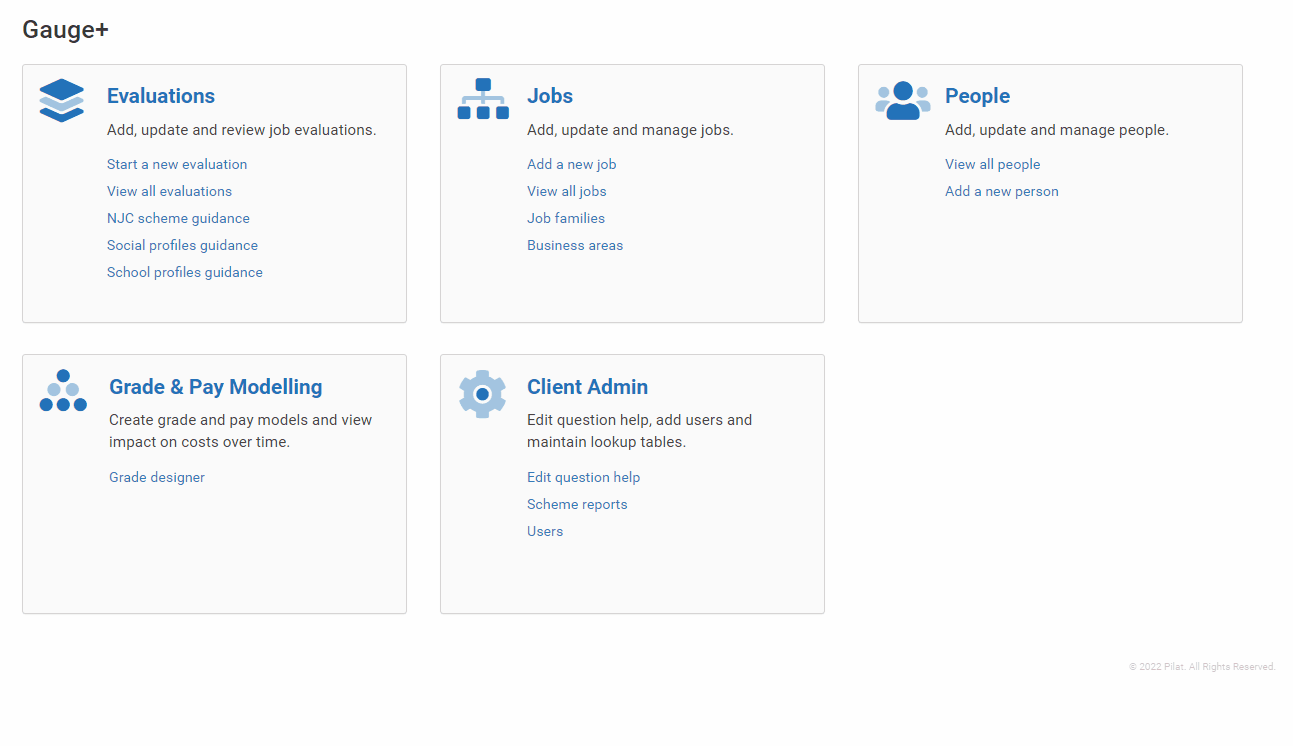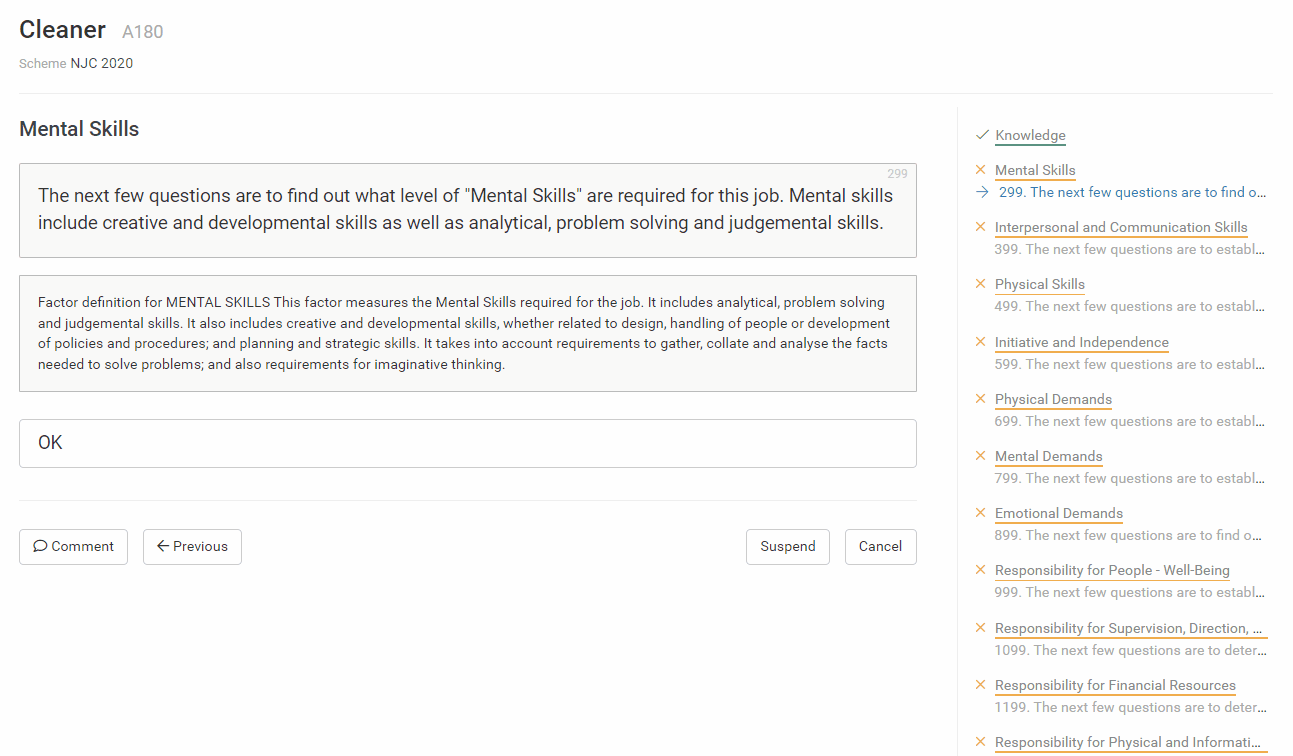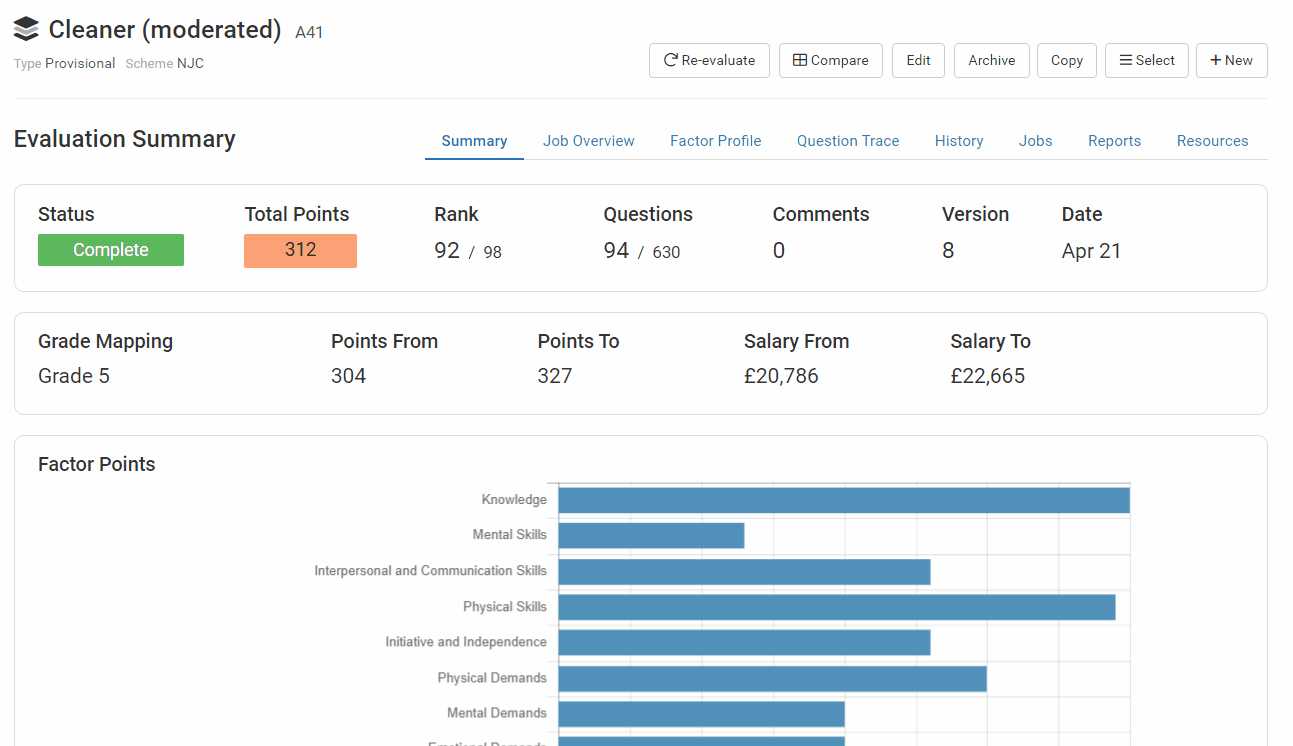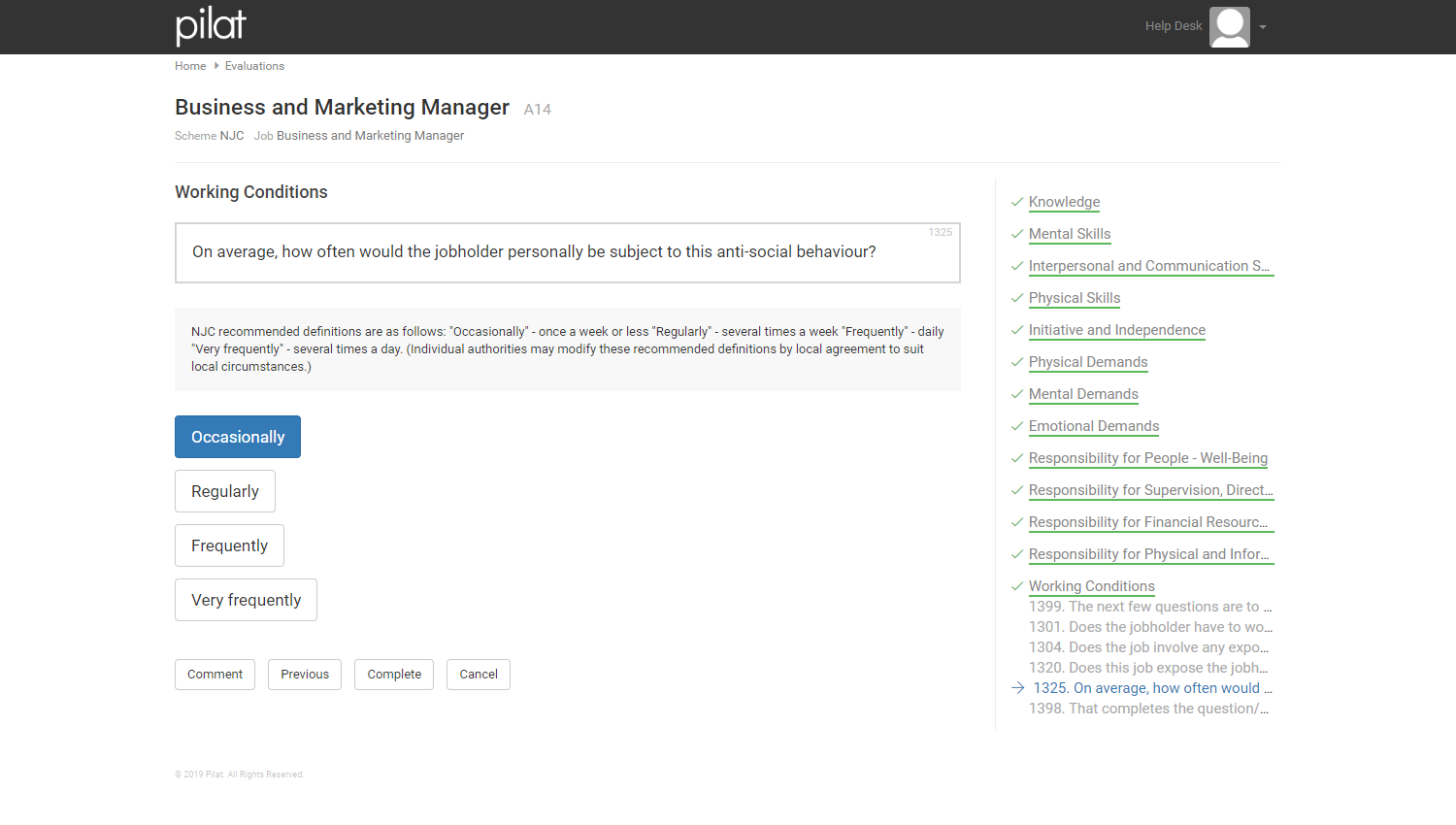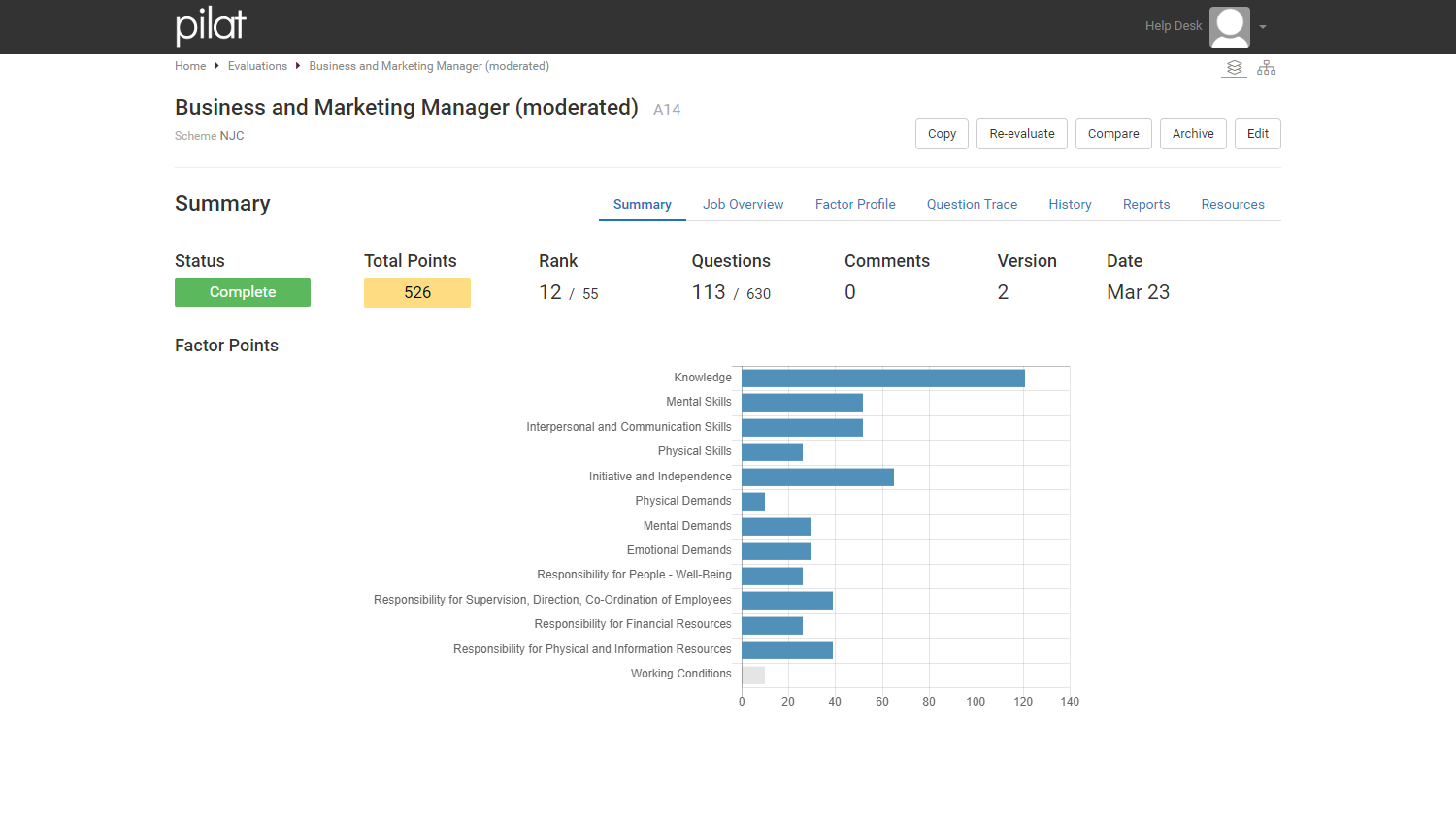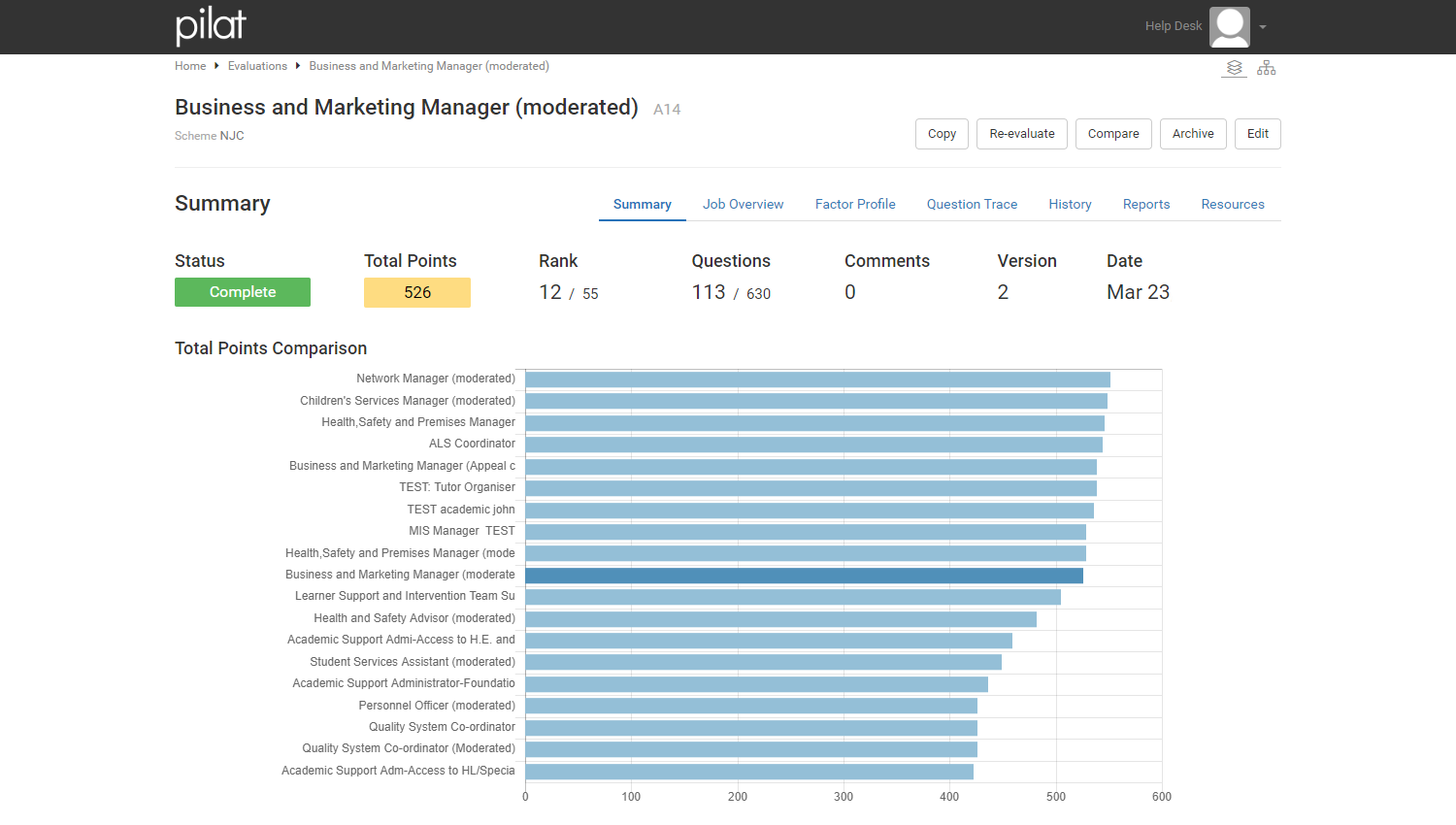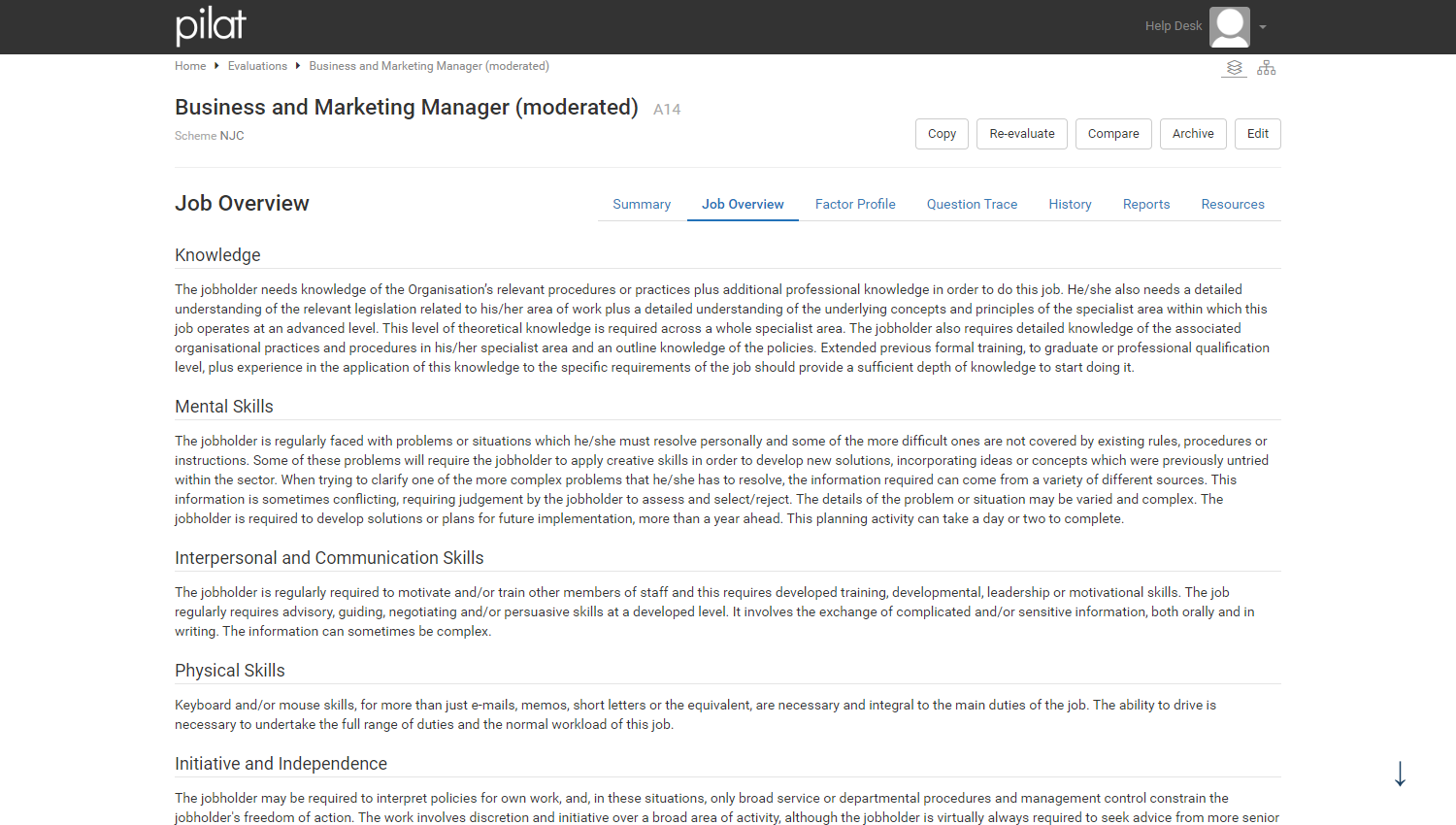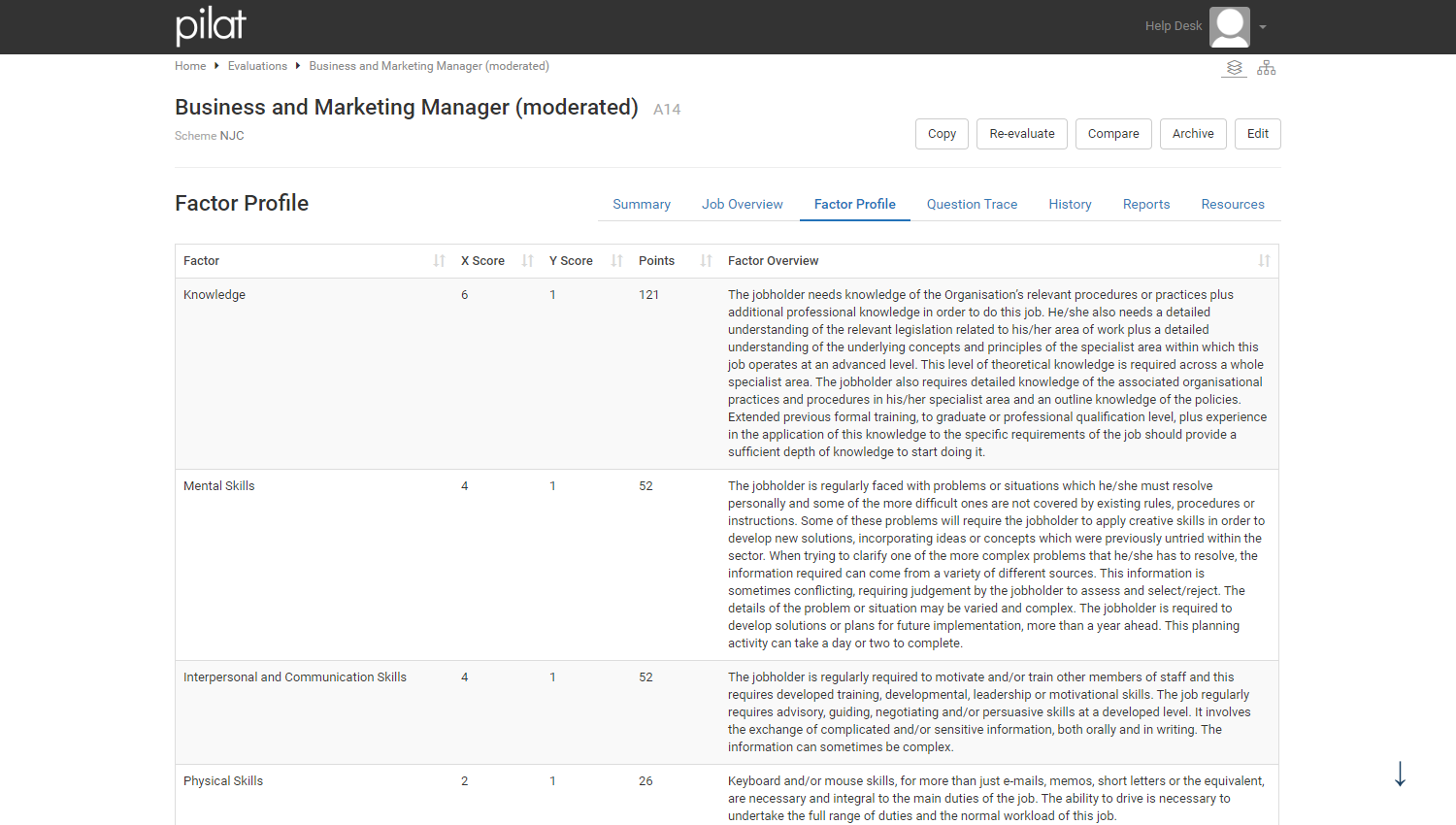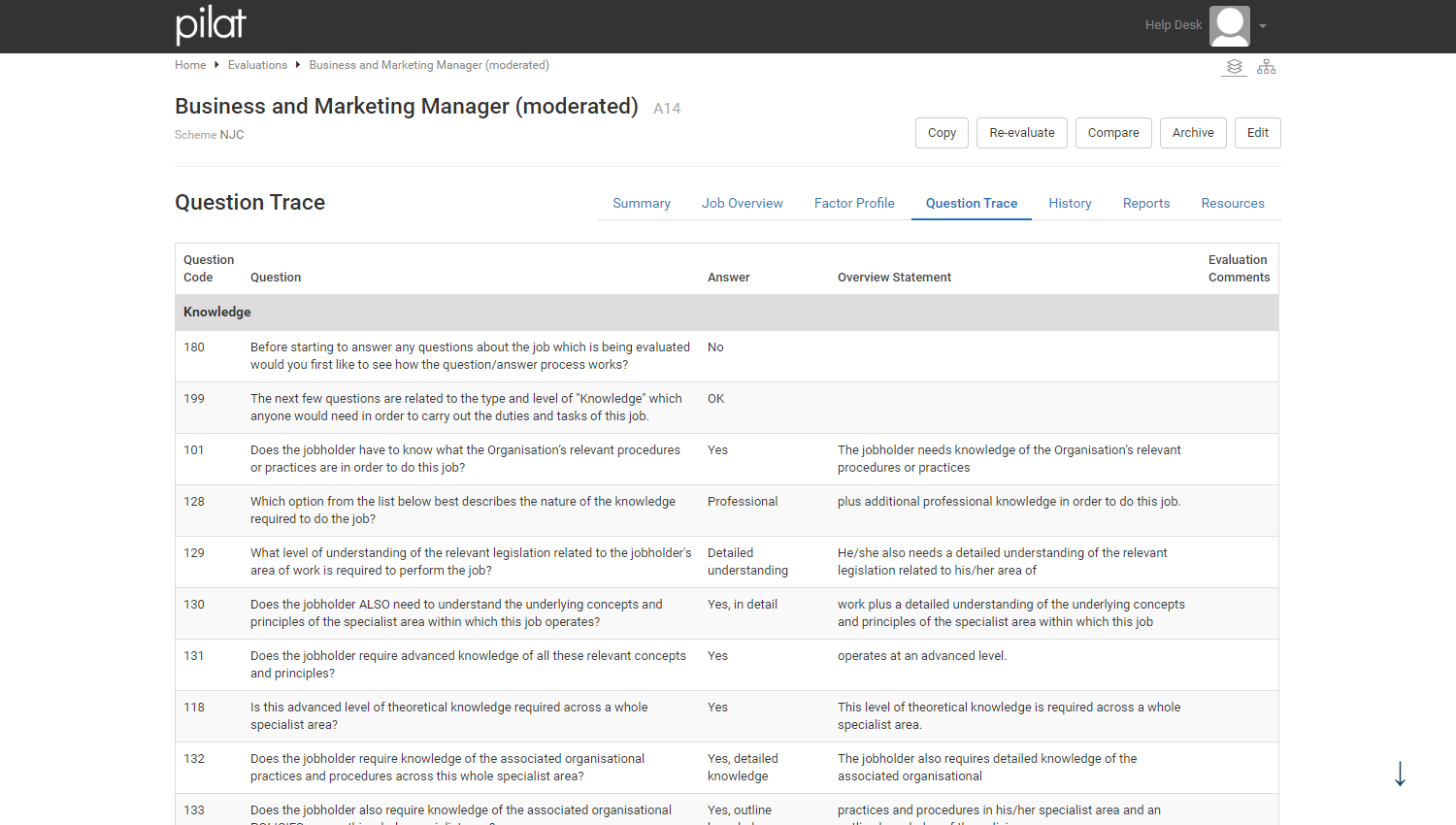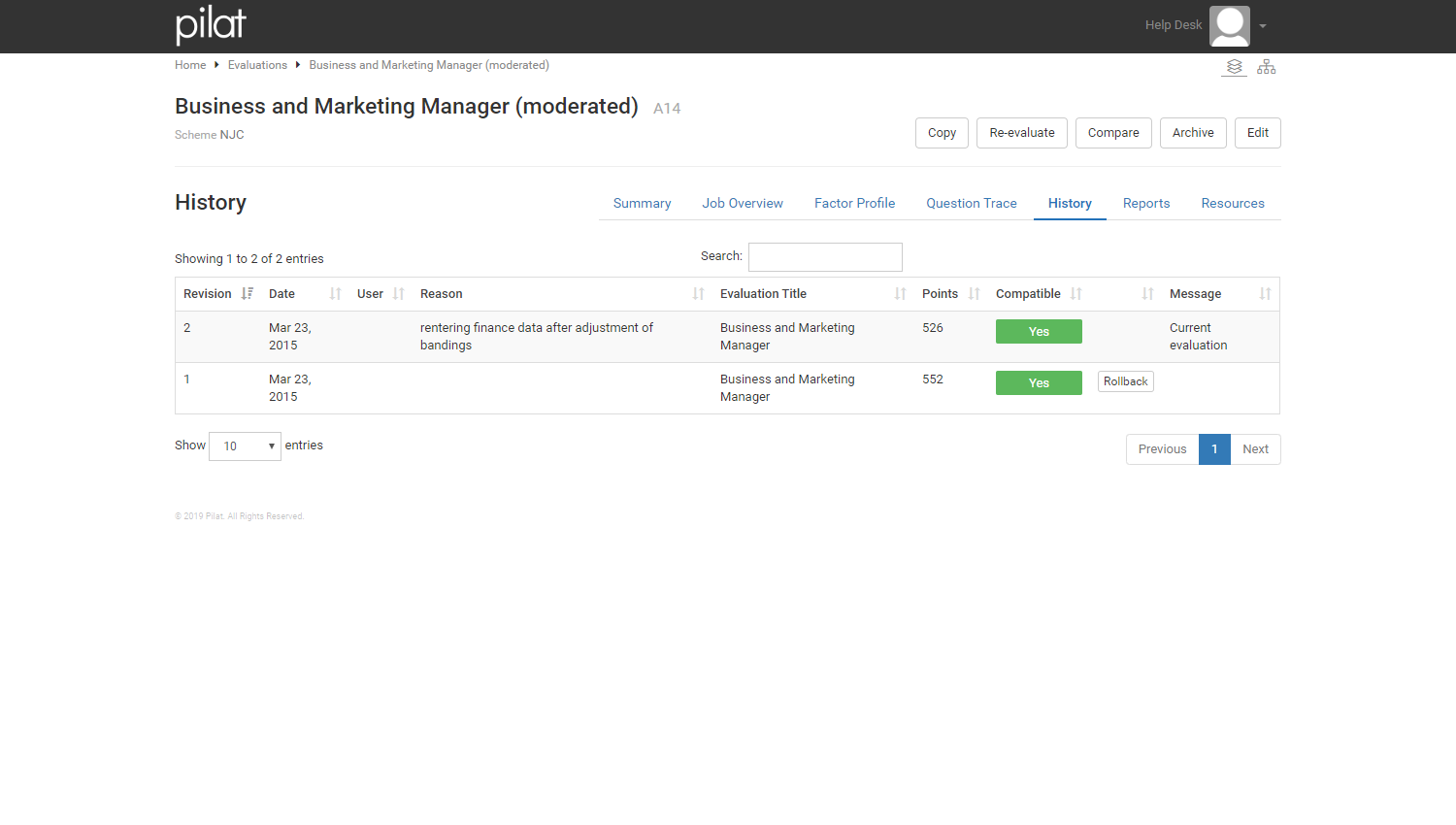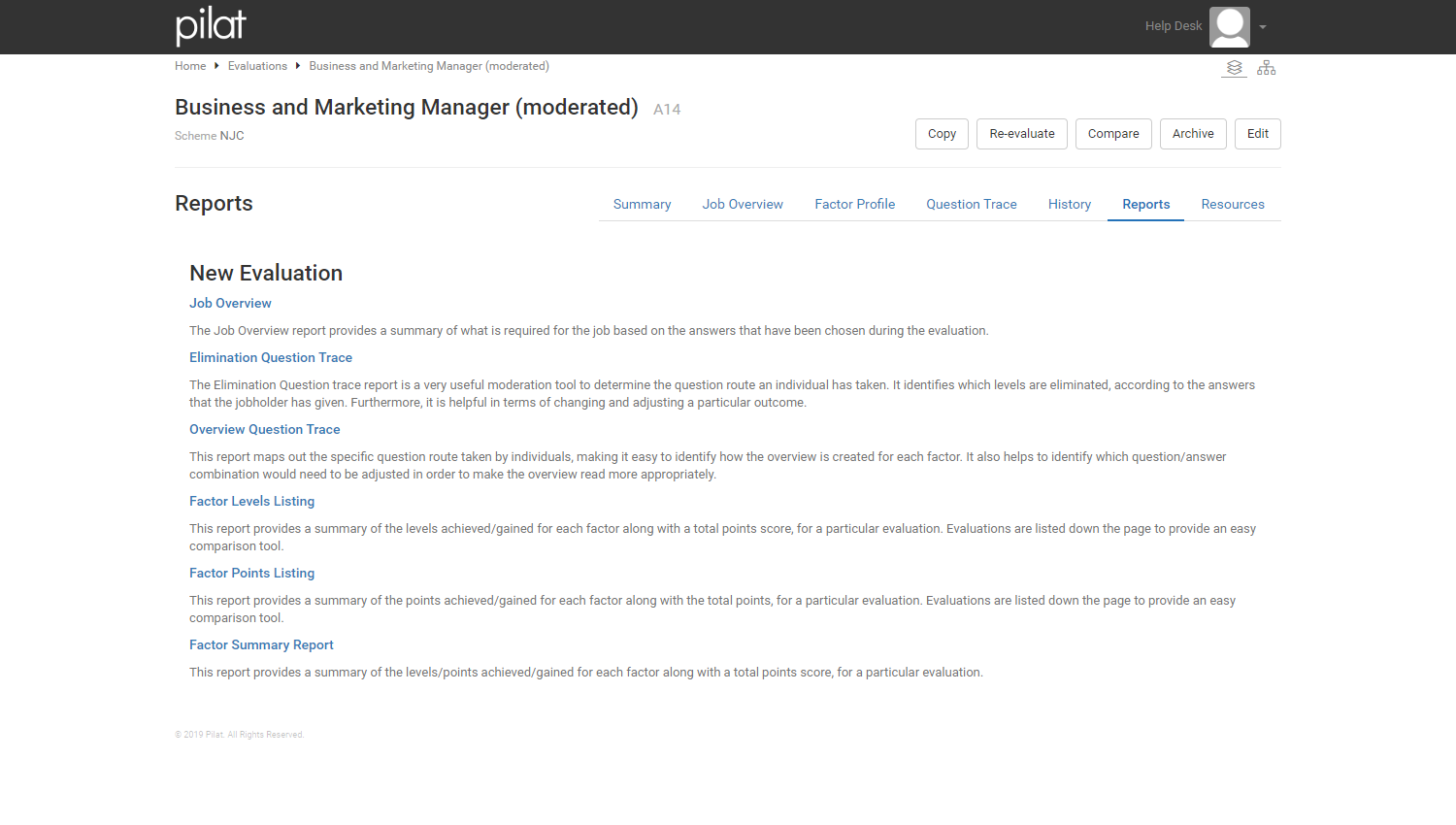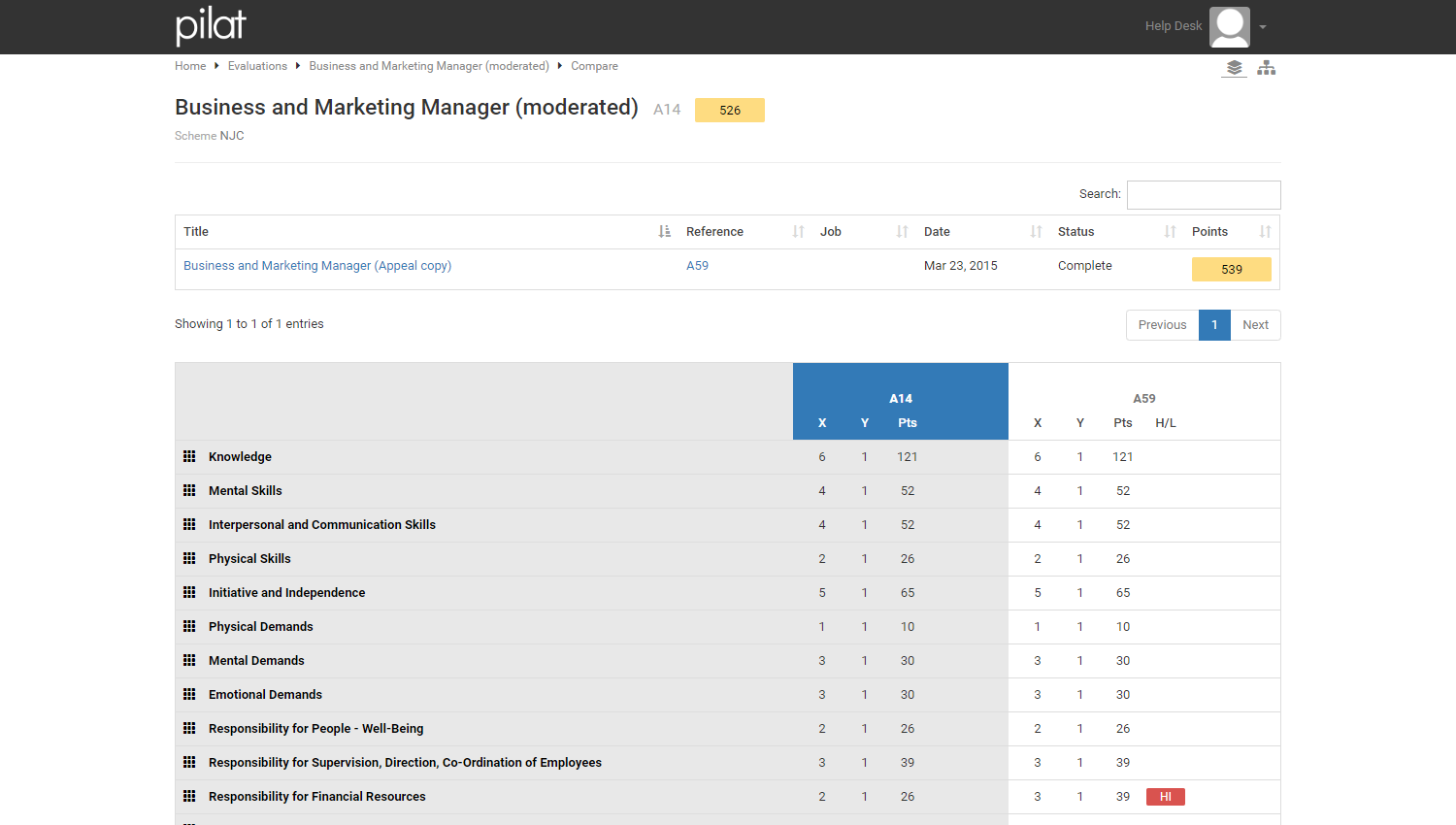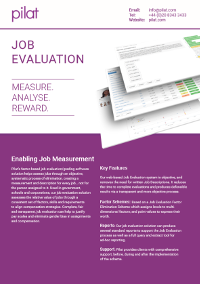NJC Job Evaluation Scheme
For local government and housing associations

Our job evaluation solution is the preferred technology partner to:





The LGA (Local Government Association) devised the NJC (National Joint Council) scheme to support single status to align equal pay with work of equal value.
The NJC scheme has been subject to regular updates, most recently in 2020 as there continues to be a significant change in the local government landscape in the form of new and evolving jobs emerging against a background of significant restructuring of councils.
Scheme reviews are conducted by the NJC’s Job Evaluation Technical Working Group (JETWG) which comprises representatives from UNISON, GMB, Unite the Union, the LGA (advised by a practitioner from a local authority), a consultant from Pilat (regarding the Gauge+ software) and an independent JE advisor.
With the current and recent reviews, no changes have been made to the basic structure of the scheme or the associated weighting or scoring, with the main changes being to the guidance notes and help text (conventions) associated with the scheme. The most recent review encompasses both the paper and computerised versions of the NJC scheme.
The Gauge+ software is designed to optimise the efficiency of the job evaluation process, incorporating the NJC’s analytical job evaluation scheme which is sound and robust and enables employers to produce appropriate job hierarchies based on relevant components.
NJC 13-Factor Scheme
Job evaluation schemes follow a set of rules (factors; factor definitions; scoring and weighting) according to which jobs are assessed and measured by the evaluation panel or committee. The Local Government Association and Job Evaluation Technical Working Group created the 13 factor NJC scheme to apply to a wide range of different jobs and to measure job demands.
The factors that have been established define the worth of job, e.g. skills required, responsibilities, working conditions, etc. giving HR and Job Analysts the necessary information to review jobs
- Knowledge
- Mental Skills
- Interpersonal & Communication Skills
- Physical Skills
- Initiative & Independence
- Physical Demands
- Mental Demands
- Emotional Demands
- Responsibility for People
- Responsibility for Financial Resources
- Responsibility for Supervision
- Responsibility for Physical Resources
- Working Conditions
This factor measures the Knowledge required for the job. It covers all technical, specialist, procedural and organisational knowledge required for the job, including numeracy and literacy; knowledge of equipment and machinery; and knowledge of concepts, ideas, other cultures or languages, theories, techniques, policies, procedures and practices. It takes into account the breadth, diversity and range of knowledge and the depth and complexity of the understanding required. This factor does not take into account the physical, mental and interpersonal/communications skills required, as these are covered by separate factors.
This factor measures the Mental Skills required for the job. It includes analytical, problem-solving and judgemental skills. It also includes creative and developmental skills, whether related to design, handling of people or development of policies and procedures; and planning and strategic skills. It takes into account requirements to gather, collate and analyse the facts needed to solve problems; and also requirements for imaginative thinking.
This factor measures the Interpersonal and Communication Skills required for the job. It includes oral, linguistic, sign and written communication skills. The emphasis of the factor is on the purpose to which the interpersonal and communication skills are put (for example, training, promoting, obtaining information from others, interviewing, gaining the co-operation of others, team working, advising, motivating, persuading, counselling, conciliating, negotiating, meeting the needs of others). The factor covers the complexity or contentiousness of the subject matter to be conveyed, and any requirements to exercise confidentiality or sensitivity. It takes into account the nature, diversity, cultural background and size of the intended audiences.
This factor measures the Physical Skills required for the job. It covers manual and finger dexterity, hand-eye coordination, coordination of limbs, and sensory coordination. It takes into account the purpose to which the skills are put and demands arising from the need to achieve specified standards of speed and precision.
This factor measures the scope allowed to the jobholder to exercise initiative and take independent actions. It takes into account the nature and level of supervision of the jobholder; the level and degree of direction and guidance provided by policies, precedents, procedures and regulations; and any requirements to organise or quality check own work.
This factor measures the type, amount, continuity and frequency of the physical effort required by the job. It covers stamina as well as strength. It takes into account all forms of bodily effort, for example, that required for standing and walking, lifting and carrying, pulling and pushing. It also includes the physical demands involved in working in awkward positions, for example, bending, crouching, stretching; for sitting, standing or working in a constrained position; and for maintaining the required pace of work.
This factor measures the degree and frequency of the mental concentration, alertness and attention required by the job. It takes into account features which may make concentration more difficult, for example, repetitive work, interruptions or the need to switch between varied tasks or activities; and other forms of work-related pressure, for instance, arising from conflicting work demands. It also takes into account the responsiveness required of the job holder.
This factor measures the nature and frequency of the Emotional Demands on the jobholder arising from contacts or work with other people. It takes into account the situation in which the contacts or work with other people occur, for example, whether they are angry, difficult, upset or unwell; or whether their circumstances are such as to cause stress to the jobholder, for example, if the people concerned are terminally ill, very frail, at risk of abuse, homeless or disadvantaged in some other way.
This factor measures the responsibility of the jobholder for individual, or groups of people (members of the public, service users and recipients, clients), other than employees supervised or managed by the jobholder. The emphasis of the factor is on the nature and extent of the direct impact on the well-being of individuals or groups.
The factor covers responsibilities, including any confidentiality requirements, for the physical, mental, social, economic and environmental well-being of people, including their health and safety. HR advice and the Organisation’s HR policy advice should be recognised under this factor. These responsibilities could be exercised through, for example, providing personal services, advice and guidance, or other forms of assistance; implementing or enforcing regulations; or developing and implementing services. If the job is an advisory or policy job in relation to People, then Answer Yes to this question. This question includes both people other than an Organisation’s employees, and those in an equivalent relationship. Those in an equivalent client or customer relationship include other employees of the organisation/local authority (for example, customers of internal staff catering facilities, or clients of HR/personnel, training, workforce development, equalities or welfare officers); or the employees or volunteers of a voluntary organisation, to whom the jobholder is providing a direct service (but supervisory or co-ordinating responsibilities should be measured under the Responsibility for Supervision, etc. factor).
This factor measures the direct responsibility of the job holder for financial resources, including cash, vouchers, cheques, debits and credits, invoices, budgets and income. It takes into account the nature of the responsibility, for example, correctness and accuracy; safekeeping, confidentiality and security; deployment and degree of direct control; budgetary and business planning responsibilities; planning, organising and long-term development of the financial resources. It also takes into account the degree to which other employees contribute to the overall responsibility, the frequency with which the responsibility is exercised and the value of the financial resources.
This factor measures the direct responsibility of the jobholder for the supervision, coordination or management of employees, or others in an equivalent position. It includes work planning and allocation; checking and evaluating the work of others; and training, development and guidance. It also includes responsibility for personnel functions for those for whom the jobholder has a formal supervisory responsibility, such as recruitment, discipline, appraisal; and planning, organising and long-term development of human resources. The emphasis of the factor is on the nature of the responsibility, rather than the precise numbers of employees supervised, coordinated or managed. It takes into account the extent to which other employees contribute to the overall responsibility.
This factor measures the direct responsibility of the job holder for physical resources, including manual or computerised information; data and records; office and other equipment; tools and instruments; vehicles; plant and machinery; land, construction works, buildings and fittings and fixtures; personal possessions; and goods, produce, stocks and supplies. It takes into account the nature of the responsibility, for example, safekeeping, confidentiality and security; deployment and degree of direct control; maintenance and repair; ordering, purchasing and replacement authority; planning, organising and long-term development of the physical resources. It also takes into account the degree to which other employees contribute to the overall responsibility, the frequency with which the responsibility is exercised and the value of the physical resources.
This factor measures exposure to disagreeable, unpleasant, uncomfortable or hazardous working conditions arising from the environment or from work with people. It covers the frequency, duration and nature of conditions, such as dust, dirt, temperature extremes and variations, humidity, noise, vibration, fumes and smells, human or animal waste steam, smoke, grease or oil, inclement weather, lack of privacy or isolation, and the risk of illness or injury arising from exposure to diseases, toxic substances, machinery or work locations. It also covers abuse, aggression and risk of injury from people.
The factor measures those aspects of the working environment which are unavoidable and integral to the job. Health and safety regulations and requirements are assumed to be met, but the requirement to wear protective clothing may create disagreeable or uncomfortable conditions.
The emphasis of this factor is on the degree of unpleasantness or discomfort caused. This takes into account the frequency, intensity and duration of exposure to particular conditions; and the additional effect of variations or combinations of conditions. land, construction works, buildings and fittings and fixtures; personal possessions; and goods, produce, stocks and supplies. It takes into account the nature of the responsibility, for example, safekeeping, confidentiality and security; deployment and degree of direct control; maintenance and repair; ordering, purchasing and replacement authority; planning, organising and long-term development of the physical resources. It also takes into account the degree to which other employees contribute to the overall responsibility, the frequency with which the responsibility is exercised and the value of the physical resources.
Implementation
During implementation, we will schedule a project kick-off meeting to finalise key dates, milestones, and responsibilities associated to your Gauge+ site going live.
Once dates have been agreed by both parties, our developers will be able to start building your Gauge+ site. If you have been using the paper-based NJC scheme, we can migrate your historical data into the software giving you a full audit trail.
In preparation, for training, we will set up delegates attending training with user profiles. These user profiles will have full admin access to Gauge+ for training purposes, however, these settings can be changed post-training.
Training
When purchasing a Gauge+ software license, you will receive training from one of our Consultants here at Pilat. The training outlines the software functionality, selected scheme, critical questions, the Job Analysis process, job evaluation methodologies and options.
Training is suited to all levels, whether they are new team members requiring knowledge of the scheme or experienced Job Analysts seeking to strengthen their facilitation skills.
Your assigned Reward Consultant can offer guidance on appeals, identifying pay structure options, developing new pay, and grading structures, modelling assimilation costs of new pay structure and more.
Image Gallery
Click image to view our gallery

